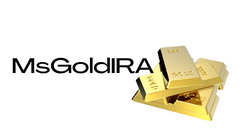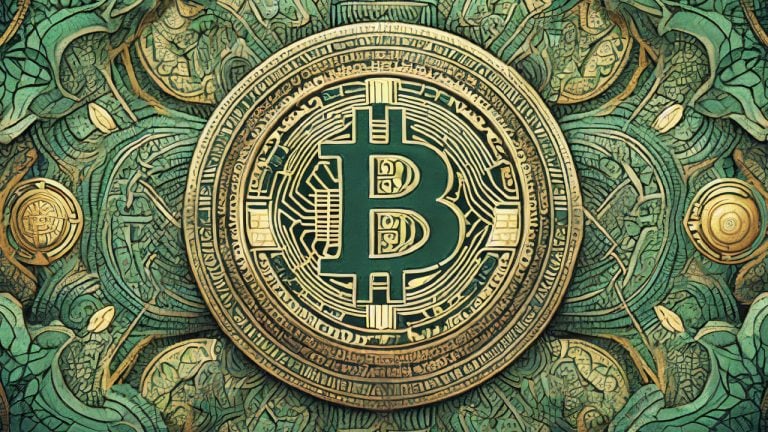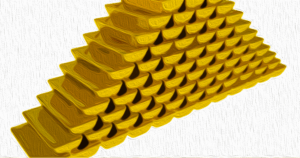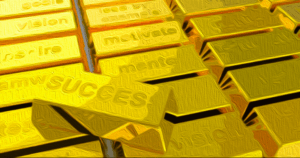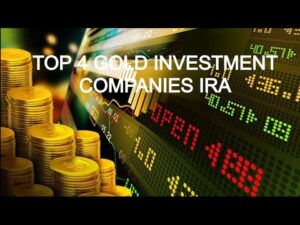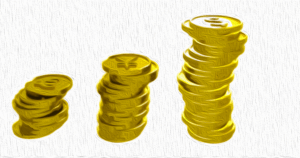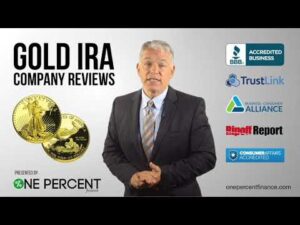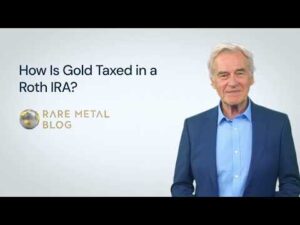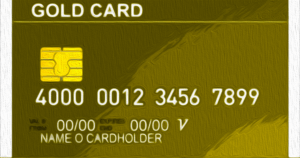
With the recent rise in anticipation for a potential Bitcoin exchange-traded fund (ETF), not all market participants share the same level of enthusiasm. Critics emphasize the potential vulnerabilities that a spot Bitcoin ETF could introduce into the market, citing concerns similar to those surrounding the gold and silver markets. The approval of such an ETF could potentially pave the way for manipulative practices reminiscent of those alleged in precious metals trading.
Potential Risks of a Physical Bitcoin ETF
While the introduction of a physical Bitcoin ETF might seem like a positive development for cryptocurrency valuation and growth, it also raises concerns. Critics fear that it could mirror the issues associated with gold and silver ETFs, where fictional Bitcoin supplies could be used as leverage for futures. Price hikes could be mitigated by releasing this hypothetical supply, and instead of diminishing the actual Bitcoin supply, buying into a Bitcoin ETF might not have the desired effect. In addition, the operators of the ETF could potentially leverage positions far beyond their verifiable assets, influencing prices in the process.
Bitcoin ETF: A Threat to Bitcoin Adoption?
Josef Tůtek, a Bitcoin analyst at Trezor, views the Bitcoin ETF as a potential threat to Bitcoin adoption. He believes that an ETF could replace actual Bitcoin usage with speculative price activity. Citing how ETFs could potentially serve as a worse alternative to exchanges, he points out that we can at least incite bank runs on exchanges and test their solvency. If they prove to be running a Bitcoin Ponzi scheme, they would collapse before they grow too large.
The Historical Context of Gold and Silver ETFs
The first gold exchange-traded product emerged in 1961 as a closed-end fund, and by 1983, it expanded to a larger investor base. After two decades on the Toronto Stock Exchange, it found its home on the U.S. Stock Exchange. But since these introductions, ETFs and financial powerhouses have been accused of manipulating precious metal prices. This suspicion extends to a Bitcoin ETF, where unchecked paper could overshadow an ETF's 100,000 Bitcoin.
The Risks of Manipulation in Cryptocurrency ETFs
Critics fear that an ETF could potentially leverage imaginary supplies, allowing corporations to hedge vast derivatives bets. When prices rise sharply, this fictitious supply could be released to control the surge. This practice is alleged to have been used in the gold market, with two former JPMorgan metals traders facing fraud convictions last year for their involvement in a gold market scheme. In 2020, JPMorgan settled U.S. allegations of precious metals futures price manipulation from 2008-2016. Similar manipulation is also suspected in the silver market.
Public Response to the Potential Bitcoin ETF
While Bitcoin ETFs may democratize access, critics fear they could conceal leverage and speculative practices from regulators and investors alike. As with precious metals ETFs, price discovery might become distorted. Social media users have also voiced their concerns. Some worry that the approval of a spot ETF could be detrimental to small retail Bitcoin investors, while others believe that the decentralized nature of Bitcoin will always triumph, regardless of the introduction of ETFs.
Despite the surge in anticipation for the potential Bitcoin ETF, the debate continues. Critics argue that while beneficial for short-term traders, long-term consequences could potentially destabilize the decentralized crypto world. Yet, others remain optimistic, believing in the indomitable decentralized nature of Bitcoin.
Frequently Asked Questions
What type of IRA are you using to buy precious metals stocks?
Employers and financial institutions often offer Individual Retirement Accounts (IRA) as an investment vehicle. A IRA is a way to make money and allow it to grow tax-deferred, until you withdraw it.
An IRA allows for you to save taxes while still paying taxes when you retire. This means that you can deposit more money into your retirement plan than have to pay taxes on it tomorrow.
An IRA is a tax-free way to make contributions and earn income until you withdraw the funds. When you do, there are penalties for early withdrawal.
You can also contribute to your IRA beyond age 50 without penalty. If you decide to withdraw funds from your IRA while you are still working, you'll owe income-taxes and a 10% penalty.
Withdrawals made before age 59 1/2 are subject to a 5% IRS penalty. A 3.4% IRS penalty is applicable to withdrawals made between the ages of 59 1/2 and 701/2.
An IRS penalty of 6.2% applies to withdrawals above $10,000 per year.
Can I get physical ownership of gold in my IRA
Many people ask themselves whether it is possible to physically own gold in an IRA. This is a fair question because there isn't any legal way to do it.
You can still own gold in an IRA if you look at the law.
Problem is, most people don’t realize how much they can save by putting gold in an IRA and not keeping it in their home.
It's very easy to dispose of gold coins, but much harder to make an IRA. If you decide to keep your precious metal in your own home you will have to pay two taxes. One for the IRS, and one for your state.
Of course, you can also lose your gold in your house and pay taxes twice. Why would you want to keep your gold in your house?
You may argue that it is necessary to have the assurance that your gold safe in your home. It is important to store your gold somewhere safer in order to prevent theft.
If you intend to visit often, don't leave your gold unattended in your home. If your gold is left unattended, thieves could easily steal it when you're away from home.
A better option is to store your gold in an insured vault. Then, your gold will be protected from fire, flood, earthquake, and robbery.
Another advantage to storing your gold in a vault is that you won't have to worry about paying property tax. Instead, any gains that you make by selling your gold will be subject to income tax.
If you'd rather avoid paying taxes on your gold, you may want to consider putting it in an IRA. With an IRA, you won't have to pay income tax even though you earn interest on your gold.
Since you aren't required to pay capital gains tax on your gold, you'll have access to the full value of your investment whenever you want to cash it out.
You won't have to move your gold because IRAs are federally regulated.
The bottom line? You can own your gold in an IRA. Your fear of it being stolen is what holds you back.
What Is a Precious Metal IRA?
Precious metals make a great investment in retirement accounts. They are a timeless investment that has held its value since the beginning of time. You can diversify your portfolio by investing in precious metals, such as gold, platinum, and silver.
Many countries also permit citizens to store money in foreign currencies. You can buy gold bars in Canada and keep them at home. You can then sell the same gold bars to Canadian dollars when you return home to visit your family.
This is a simple way to make investments in precious metals. It's particularly helpful for people who don't reside in North America.
Statistics
- Depending on your financial situation, most experts recommend you invest no more than 5% to 10% of your retirement funds in precious metals. (forbes.com)
- If you accidentally make an improper transaction, the IRS will disallow it and count it as a withdrawal so that you would owe income tax on the item's value and, if you are younger than 59 ½, an additional 10% early withdrawal penalty. (forbes.com)
- The maximum yearly contribution to an individual's IRAs is currently $6,000 ($7,000 for those 50 years or older), or 100% of earned income, whichever is less. (monex.com)
- Same tax rules as traditional IRA SEP IRA contributions in 2022 are limited to 25% of compensation or $66,000, whichever is less Before setting up a Silver IRA, understand the fees and IRS restrictions. (sltrib.com)
External Links
kitco.com
forbes.com
- Gold IRA – Add Sparkle to Your Retirement Nest Egg
- Understanding China's Evergrande Crisis – Forbes Advisor
takemetothesite.com
regalassets.com
How To
How to open a Precious Metal IRA
Precious metals are one of the most sought-after investment vehicles today. They offer investors higher returns than traditional investments, such as bonds and stocks. This is why they are so popular. However, investing in precious metals requires careful planning and research before purchasing. These are the first things you need to know if you're looking to open a precious metal IRA.
There are two types of precious metal accounts. They are paper gold and silver certificates (GSCs) and physical precious metals accounts. Each type has its advantages and disadvantages. GSCs, on the other hand, are more accessible and can be traded. Read on to find out more.
Physical precious metals accounts include bullion, bars and coins. While this option provides diversification benefits, it also comes with some drawbacks. Precious metals can be expensive to store, buy and sell. Due to their size, it can be difficult for them to be transported from one place to another.
The silver and paper gold certificates are also relatively affordable. Additionally, they can be easily traded online and accessible. This makes them ideal for people who don't want to invest in precious physical metals. However, they aren't as diversified as their physical counterparts. These assets are also supported by government agencies, such as the U.S. Mint. Inflation rates could cause their value to drop.
If you open a precious metal IRA, choose the right account for your financial situation. The following are important factors to consider before opening an IRA.
- Your tolerance level
- Your preferred asset allocation strategy
- What time do you have available to invest?
- It is up to you whether you intend on using the funds short-term for trading purposes.
- What kind of tax treatment you'd prefer
- Which precious metals would you prefer to invest in
- How liquid can your portfolio have to be
- Your retirement age
- Where you will store precious metals
- Your income level
- Your current savings rate
- Your future goals
- Your net worth
- Special circumstances that may influence your decision
- Your overall financial situation
- Preference between paper and physical assets
- Your willingness to accept risks
- Your ability to manage losses
- Your budget constraints
- You desire to be financially independent
- Your investment experience
- Your familiarity with precious metals
- Your knowledge about precious metals
- Your confidence in the economy
- Your personal preferences
Once you've determined which type of precious metal IRA best suits your needs, you can proceed to open an account with a reputable dealer. These companies can be found through word of mouth, referrals and online research.
Once you have opened your precious-metal IRA, it is time to decide how much you want to deposit. You should note that every precious metal IRA account has a different minimum deposit amount. Some account require just $100, while some allow you to put up to $50,000.
As you can see, your precious metal IRA IRA investment amount is completely up to the individual. You should choose a higher initial deposit if you want to build wealth over time. However, a smaller initial deposit might work for you if your goal is to invest less money each month.
You have many options when it comes to the type of investments you can make. The most popular are:
- Bullion bars and rounds of gold, as well as coins
- Silver – Rounds or coins
- Platinum – Coins
- Palladium – Bar and round forms
- Mercury – Bar and round forms
—————————————————————————————————————————————————————————————-
By: Jamie Redman
Title: Bitcoin ETF Enthusiasm Meets Skepticism: Concerns of Market Manipulation Emerge
Sourced From: news.bitcoin.com/amid-rising-bitcoin-etf-hopes-critics-warn-of-vulnerability-and-echoes-of-precious-metal-manipulation/
Published Date: Fri, 20 Oct 2023 18:00:50 +0000
